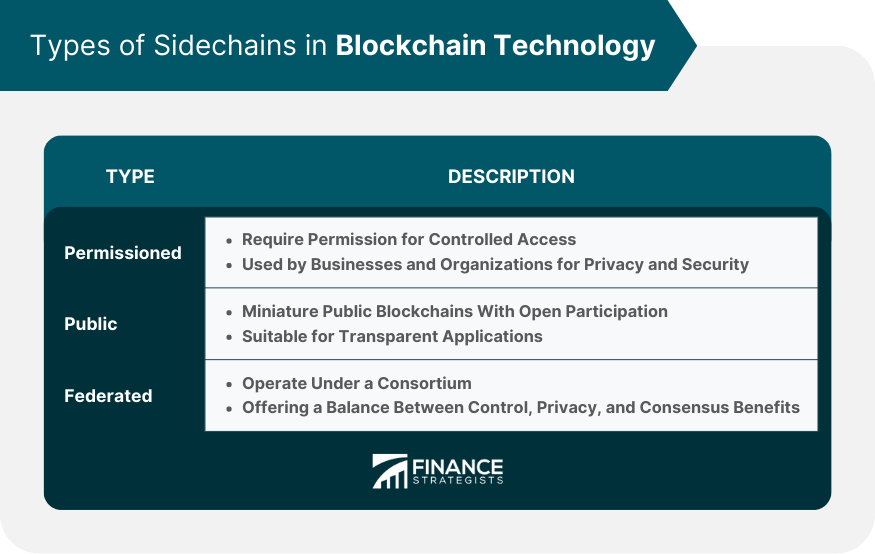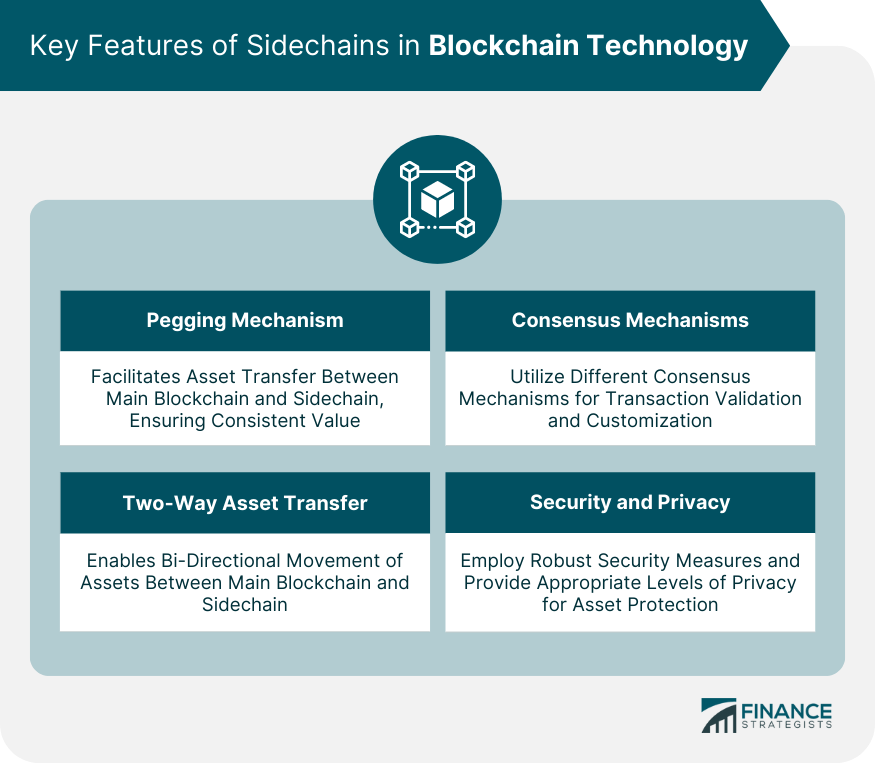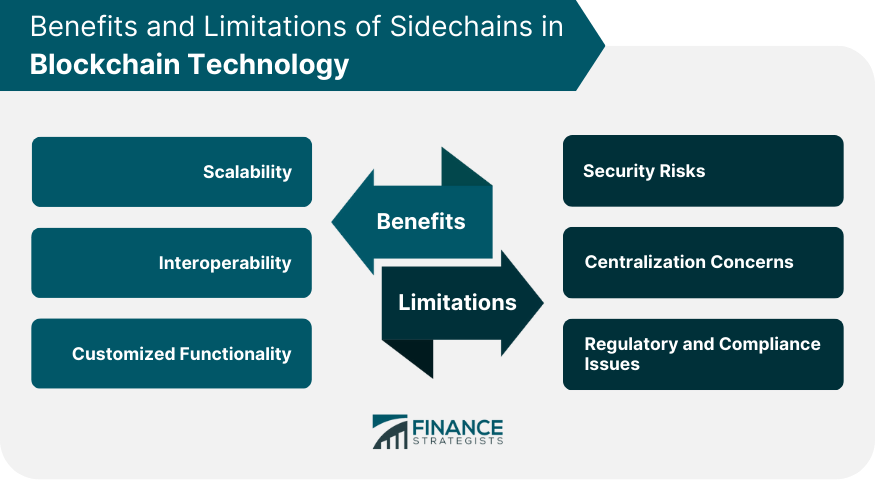A sidechain is a secondary blockchain network that operates in parallel to the main or primary blockchain. They are designed to solve potential scalability issues and allow for the exploration of unique blockchain functionalities. In essence, sidechains enable assets from one blockchain to be used securely in a separate blockchain and then returned to the original blockchain if needed. The ability to move assets across blockchains seamlessly opens up vast possibilities for innovation and experimentation. Sidechains work by using a pegging mechanism, allowing for the transfer of assets from the main blockchain to the sidechain. This allows for assets to be moved across different chains without the need for an intermediary, a crucial feature in maintaining the decentralized ethos of blockchain technology. Once the assets are on the sidechain, they can be used within that chain's unique ecosystem, allowing users to take advantage of different blockchain features or rules. After use, the assets can be moved back to the original blockchain, retaining their initial value and properties. Permissioned sidechains, as the name suggests, require permission to access and use. They are primarily used by businesses and organizations that need to control who has access to the sidechain and the data contained therein. This control allows these organizations to harness the benefits of blockchain technology while maintaining data privacy and security. They also allow for more control over consensus mechanisms, making them adaptable to specific needs. Public sidechains are, in essence, miniature public blockchains. They operate under the same principles as public blockchains, meaning anyone can participate in their consensus protocol and validate transactions. Public sidechains are ideal for applications that require transparency and open participation, such as decentralized applications (dApps) or public financial systems. Federated sidechains operate under a consortium of select participants who control the consensus protocol. This means that while they are not fully open like public sidechains, they are also not fully restricted like permission sidechains. Federated sidechains can offer a balance between control and openness, making them ideal for applications that require some level of privacy but also want to leverage the consensus benefits of a larger, select group of participants. The pegging mechanism is a fundamental feature of sidechains. This mechanism allows for the transfer of assets between the main blockchain and the sidechain. It's the pegging mechanism that keeps the value of the assets consistent across different chains. This feature is essential in maintaining the integrity of assets as they move across different blockchain environments. It ensures that an asset maintains its value and properties, regardless of the blockchain it is currently residing in. Another crucial feature of sidechains is the ability to facilitate two-way asset transfers. This means assets can move from the main blockchain to the sidechain and then back to the main blockchain. This bi-directional transferability is essential in ensuring that assets are not "stuck" in a sidechain and can return to the main blockchain. It's this feature that truly enables the flexibility and versatility of sidechains. Just like main blockchains, sidechains also utilize consensus mechanisms to validate transactions and maintain the blockchain's integrity. However, sidechains can employ different consensus mechanisms than the main chain, depending on their specific needs and use cases. This flexibility allows sidechains to experiment with different consensus mechanisms to improve efficiency, reduce energy consumption, or enhance security, providing another layer of customization to blockchain technology. Despite being secondary networks, sidechains are not secondary when it comes to security and privacy. They must employ robust security measures to protect against potential attacks and ensure the integrity of the assets they hold. Similarly, depending on the type of sidechain (permissioned, public, or federated), they must also provide appropriate levels of privacy for their users. This can range from full transparency in public sidechains to high levels of data privacy in permissioned sidechains. By offloading transactions from the main chain to sidechains, the main blockchain can maintain its performance and speed even as it grows. This is crucial for blockchains like Bitcoin and Ethereum, where the number of transactions can significantly slow down transaction speeds and increase costs. By allowing assets to move across different chains, sidechains create a more interconnected and versatile blockchain ecosystem. This can enable more innovative and complex applications of blockchain technology. Since sidechains can operate under different rules and features than the main chain, they enable exploration and experimentation in blockchain technology. This can lead to the development of new blockchain applications and advancements. Since they operate independently of the main chain, they might not have the same level of security. If not properly secured, sidechains could become a target for attackers, potentially compromising the assets they hold. While sidechains can enhance blockchain scalability and functionality, they can also lead to potential centralization. Particularly in the case of permissioned or federated sidechains, control over the sidechain might become concentrated in a select few participants. This goes against the decentralized ethos of blockchain technology. As secondary blockchain networks, sidechains can potentially fall under different regulatory jurisdictions than the main chain. This can create legal and compliance complexities that need to be navigated carefully. RSK, or Rootstock, is an open-source smart contract platform with a 2-way peg to Bitcoin. It merges the capabilities of Ethereum's smart contracts with the Bitcoin network, effectively bringing the flexibility and versatility of Ethereum to Bitcoin. RSK enhances the Bitcoin ecosystem by enabling more complex applications without compromising the security of the Bitcoin network. By leveraging Bitcoin's established and secure blockchain, RSK has created a robust platform for smart contract development and execution. The Liquid Network is a federated sidechain for Bitcoin designed by Blockstream. It enables fast, secure, and confidential transactions, providing a solution for financial institutions and exchanges that require speedy and private Bitcoin transactions. Through the Liquid Network, users can also issue digital assets, opening up a plethora of possibilities for asset tokenization, such as tokenizing securities, rewards points, or fiat currencies. Plasma is a framework for building scalable decentralized applications on the Ethereum network. It's essentially a network of sidechains (also known as child chains) designed to perform complex operations off the Ethereum mainnet, reducing the load on the main Ethereum blockchain and enhancing its scalability. Each Plasma sidechain can operate independently and handle its transactions, reducing the overall load on the Ethereum mainnet. This means the Ethereum network can handle more transactions and operate more efficiently, making it more scalable. A sidechain is a secondary blockchain network that operates in parallel to the main blockchain. It is designed to address scalability issues and allows for the exploration of unique blockchain functionalities. The benefits of using sidechains include scalability, interoperability, and customized functionality. Sidechains enable offloading transactions, creating a more interconnected ecosystem and facilitating experimentation in blockchain applications. However, sidechains also face limitations such as security risks, centralization concerns, and regulatory complexities. Ensuring robust security measures, maintaining decentralization, and navigating regulatory landscapes are crucial for successful sidechain implementations. Sidechains expand the capabilities of blockchain technology but require careful consideration of security, decentralization, and compliance aspects to fully harness their potential.What Is a Sidechain in Blockchain Technology?
How Does Sidechain in Blockchain Technology Work
Types of Sidechains in Blockchain Technology
Permissioned Sidechains
Public Sidechains
Federated Sidechains

Key Features of Sidechains in Blockchain Technology
Pegging Mechanism
Two-Way Asset Transfer
Consensus Mechanisms
Security and Privacy Considerations

Benefits of Using Sidechains in Blockchain Technology
Scalability
Interoperability
Customized Functionality
Limitations of Sidechains in Blockchain Technology
Security Risks
Centralization Concerns
Regulatory and Compliance Issues

Examples of Sidechain Implementations
RSK (Rootstock)
Liquid Network
Plasma
Conclusion
Sidechain in Blockchain Technology FAQs
A sidechain is a secondary blockchain network that operates in parallel to a primary blockchain. It allows assets to move across chains, providing a solution for scalability issues and enabling innovative blockchain applications.
A sidechain works by using a pegging mechanism that enables assets to move from the main blockchain to the sidechain and vice versa. This allows assets to be used within the sidechain's unique ecosystem without losing their original value or properties.
Sidechains offer several benefits, including enhanced scalability by offloading transactions from the main chain, increased interoperability through the movement of assets across chains, and the ability to create customized blockchain functionalities.
Some limitations of sidechains include potential security risks, as they might not have the same level of security as the main chain, centralization concerns, especially in the case of permissioned or federated sidechains, and regulatory and compliance issues, given the potential for different regulatory jurisdictions.
Yes, examples of sidechain implementations include RSK (Rootstock), an open-source smart contract platform with a 2-way peg to Bitcoin, the Liquid Network, a federated sidechain for Bitcoin designed for fast and private transactions, and Plasma, a framework for scalable decentralized applications on the Ethereum network.
True Tamplin is a published author, public speaker, CEO of UpDigital, and founder of Finance Strategists.
True is a Certified Educator in Personal Finance (CEPF®), author of The Handy Financial Ratios Guide, a member of the Society for Advancing Business Editing and Writing, contributes to his financial education site, Finance Strategists, and has spoken to various financial communities such as the CFA Institute, as well as university students like his Alma mater, Biola University, where he received a bachelor of science in business and data analytics.
To learn more about True, visit his personal website or view his author profiles on Amazon, Nasdaq and Forbes.















